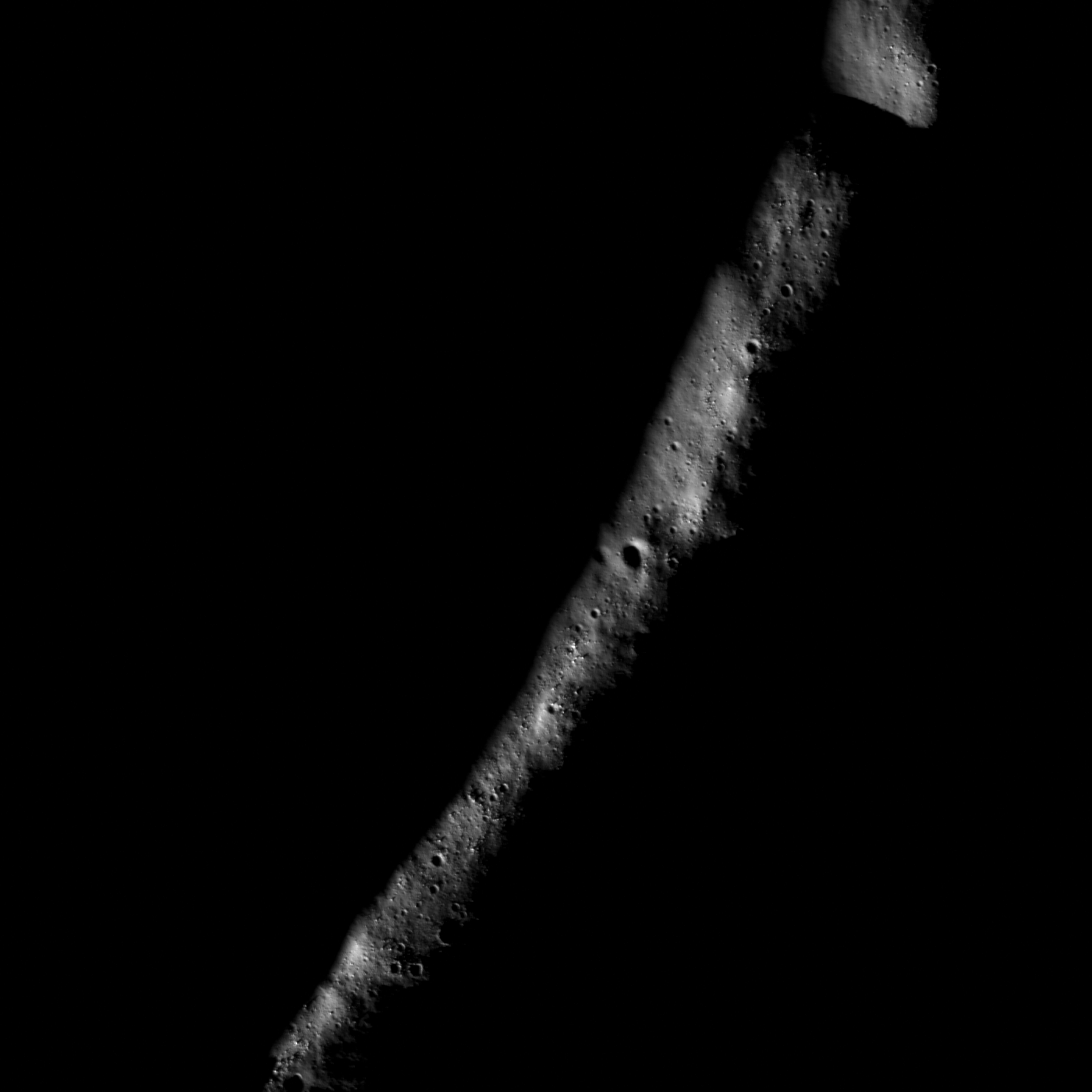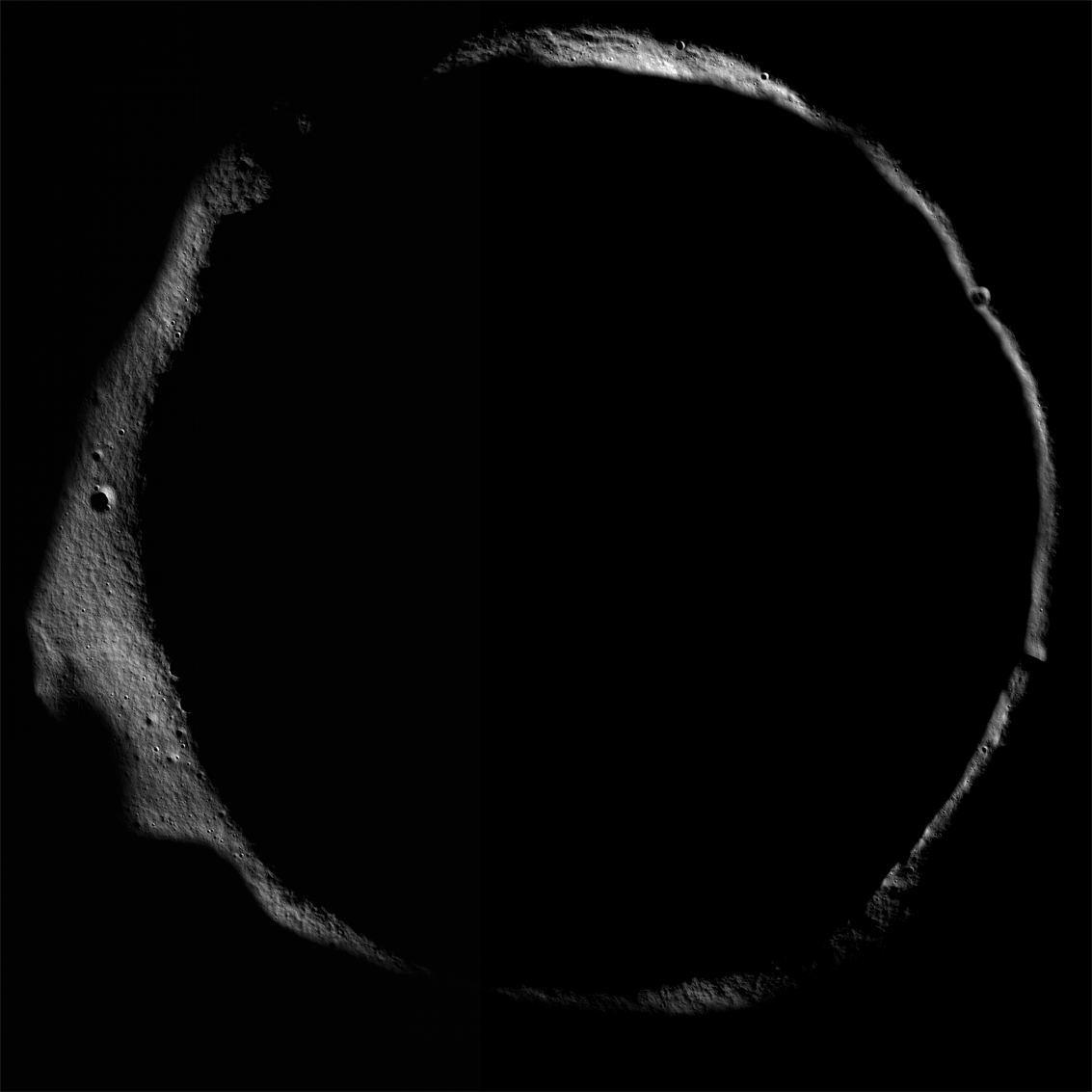
The LRO and LCROSS missions are both collecting data to test the hypothesis that ices may be trapped in permanently shadowed craters near the lunar poles. How could ices survive on the Moon? We know that the surface of the Moon reaches very high temperatures during the day and it is exposed to the vacuum of space - neither condition is conducive to ice. However, since the Moon's spin axis is tilted only a very small amount, the floors of some craters near the poles never receive any sunlight. In these permanently shadowed regions the temperature hovers somewhere at or below 50 degrees Kelvin (or -370 degrees Fahrenheit). At those temperatures, any water molecules (from sources like ice-rich cometary impacts) that fall into such a crater will be permanently trapped.
There are many craters on the Moon where some or all of their floors are permanently shadowed, and Erlanger is just one. We do not know if Erlanger harbors ices, however a clever experiment involving LRO and the Indian lunar orbiter Chandrayaan was carried out last week to peer into Erlanger with radar waves. Both spacecraft have radars, so the Chandrayaan radar illuminated the interior of Erlanger while LRO passed below the Indian spacecraft and received the reflected radar waves coming from the crater in an innovative bistatic radar experiment. The bistatic radar strategy allows scientists to better determine the nature of materials on the surface.
Understanding the nature of trapped volatiles at the lunar poles is incredibly important. Those trapped volatiles could let lunar scientists unravel a record of water in the Solar System dating back for at least several hundred million years, offering priceless insights into the history of volatiles in the inner Solar System. In addition, any volatiles that exist could be an incredibly useful resource for future lunar inhabitants and a vital stepping-stone for human adventures throughout the inner Solar System. Data from LRO and other lunar missions like Chandraayaan-1 will be used to determine the best places on the Moon to send future human lunar explorers.
Scroll around in the whole two-image mosaic!
Published by Brett Denevi on 24 August 2009
